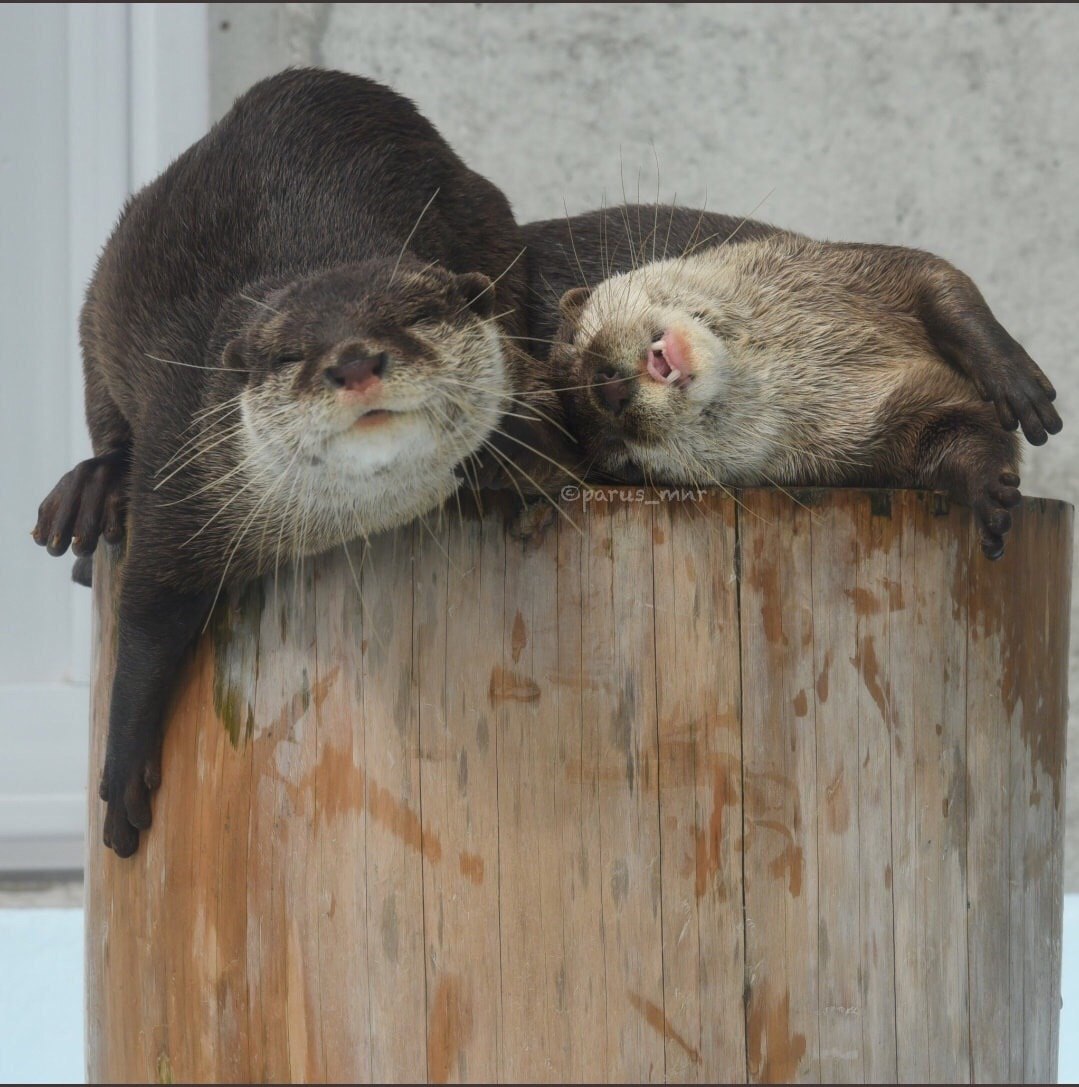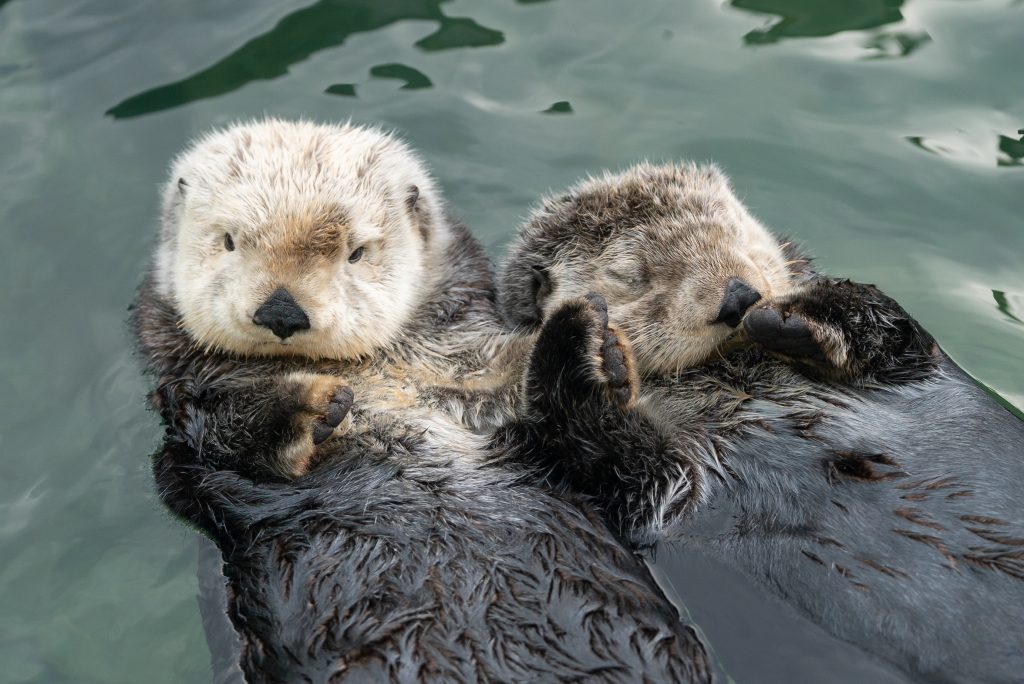Sea otters are among the most enchanting marine mammals, and many people wonder if they mate for life. These charismatic creatures have captured the hearts of wildlife enthusiasts worldwide. Their playful behavior and strong social bonds have led to many myths and misconceptions about their mating habits. In this article, we will explore the truth about whether sea otters mate for life and delve into their fascinating relationships.
Sea otters are not just adorable; they are also highly intelligent and social animals. Their unique behaviors and adaptations have made them a symbol of marine conservation. Understanding their mating habits and social structures can provide valuable insights into their role in the ecosystem.
This article will examine the question, "Do sea otters mate for life?" by exploring scientific research, expert opinions, and real-life observations. We will also discuss the importance of preserving these incredible creatures and their habitats.
Read also:Dive Into The Daze Puzzle Nyt A Comprehensive Guide To Solving The Enigma
Table of Contents
- The Biology of Sea Otters
- Do Sea Otters Mate for Life?
- Exploring Monogamy in Sea Otters
- Reproduction and Family Life
- Social Structure and Bonding
- Conservation Efforts for Sea Otters
- Common Myths About Sea Otters
- Fascinating Facts About Sea Otters
- Scientific Research on Sea Otters
- Conclusion
The Biology of Sea Otters
Sea otters (Enhydra lutris) are marine mammals native to the coasts of the northern Pacific Ocean. They are the heaviest members of the weasel family and the smallest marine mammals. Unlike other marine mammals, sea otters do not rely on blubber for insulation but instead have incredibly dense fur, which helps them stay warm in cold waters.
There are three recognized subspecies of sea otters: the northern sea otter, the southern sea otter, and the Asian sea otter. Each subspecies has distinct characteristics and habitats. Understanding their biology is crucial to answering the question of whether sea otters mate for life.
Physical Characteristics
Sea otters have several unique physical traits that set them apart from other marine mammals. Their fur is the densest of any animal, with up to one million hairs per square inch. This dense fur helps them maintain body heat in cold water. Additionally, sea otters have webbed feet, which aid in swimming, and a loose flap of skin under their arms where they store food.
- Dense fur for insulation
- Webbed feet for swimming
- Loose skin flap for storing food
Do Sea Otters Mate for Life?
One of the most common questions about sea otters is whether they mate for life. The short answer is no; sea otters do not typically form lifelong monogamous pairs. Instead, their mating behavior is more complex and involves seasonal breeding and temporary pairings.
While sea otters are known for their strong social bonds, particularly between mothers and pups, their mating habits are not as straightforward as some might believe. Male sea otters often mate with multiple females during the breeding season, and females may also mate with different males.
Seasonal Breeding
Sea otters have a distinct breeding season, which varies depending on the subspecies and location. During this time, males establish territories and compete for access to females. Female sea otters are selective in choosing mates, and the mating process can be quite aggressive.
Read also:Discovering Marie Temara A Comprehensive Guide To Her Life And Achievements
Research conducted by the U.S. Geological Survey and other organizations has shown that sea otter mating is not monogamous. Instead, it is driven by reproductive strategies that maximize genetic diversity and survival rates.
Exploring Monogamy in Sea Otters
Although sea otters do not mate for life, they do form strong bonds during the breeding season. These temporary pairings can last for several days or weeks, during which the male and female remain close to each other. This behavior has led to the misconception that sea otters are monogamous.
Monogamy in animals is relatively rare, and sea otters are no exception. Their mating habits are influenced by environmental factors, social structures, and reproductive needs. Understanding the nuances of their behavior requires a deeper look at their social dynamics.
Temporary Pair Bonds
During the breeding season, sea otters form temporary pair bonds that are crucial for successful reproduction. These bonds ensure that the male and female remain close during the critical period of conception. However, once the mating season ends, these bonds typically dissolve, and the animals go their separate ways.
Temporary pair bonds are a common strategy in the animal kingdom, allowing species to maximize reproductive success without the constraints of lifelong monogamy.
Reproduction and Family Life
Sea otter reproduction is a fascinating process that involves several stages, from courtship to raising pups. Female sea otters give birth to a single pup after a gestation period of approximately six to eight months. The mother plays a crucial role in nurturing and protecting her pup during its early months of life.
Unlike many other marine mammals, sea otters do not form large family groups. Instead, the mother and pup form a tight-knit bond that lasts for about six months. During this time, the mother teaches the pup essential skills, such as foraging and swimming.
Raising Pups
Raising a sea otter pup is a demanding task that requires constant attention from the mother. She must balance her own nutritional needs with the demands of caring for her offspring. This period is critical for the pup's survival, as it learns the skills necessary to thrive in its marine environment.
Studies conducted by the Monterey Bay Aquarium and other research institutions have shown that sea otter mothers invest significant time and energy in raising their pups, which contributes to their high survival rates.
Social Structure and Bonding
Sea otters are highly social animals that form rafts, which are groups of individuals that float together on the water's surface. These rafts can consist of a few individuals or hundreds, depending on the location and time of year. Social bonding is an essential aspect of sea otter life, and it plays a role in their mating behavior.
While sea otters do not mate for life, their social structures facilitate temporary pairings and cooperative behaviors that benefit the group as a whole. Understanding their social dynamics provides valuable insights into their mating habits and overall behavior.
Importance of Social Bonds
Social bonds in sea otters extend beyond mating. These bonds help individuals protect themselves from predators, share resources, and maintain group cohesion. Strong social bonds also contribute to the success of temporary pairings during the breeding season.
Research published in the journal Marine Mammal Science highlights the importance of social bonds in sea otter populations, emphasizing their role in population stability and ecological balance.
Conservation Efforts for Sea Otters
Sea otters are listed as an endangered species due to habitat loss, pollution, and other threats. Conservation efforts are critical to ensuring their survival and preserving their unique behaviors, including their mating habits. Organizations such as the International Union for Conservation of Nature (IUCN) and the Sea Otter Foundation are working tirelessly to protect these incredible creatures.
Conservation programs focus on habitat restoration, reducing pollution, and raising awareness about the importance of sea otters in marine ecosystems. By supporting these efforts, we can help ensure that future generations can enjoy the beauty and wonder of sea otters.
Threats to Sea Otters
Sea otters face numerous threats in the wild, including oil spills, overfishing, and climate change. These threats have a significant impact on their populations and mating behaviors. Conservationists are working to address these challenges by implementing policies and programs that protect sea otter habitats and promote sustainable practices.
- Oil spills
- Overfishing
- Climate change
Common Myths About Sea Otters
There are many myths and misconceptions about sea otters, particularly regarding their mating habits. One of the most persistent myths is that sea otters mate for life. As we have seen, this is not true. Sea otters form temporary pair bonds during the breeding season, but these bonds are not lifelong.
Other myths about sea otters include their diet, intelligence, and social behavior. Debunking these myths is essential for promoting accurate information and supporting conservation efforts.
Debunking Myths
Sea otters are often misunderstood, and myths about their behavior can lead to misconceptions about their role in the ecosystem. By relying on scientific research and expert opinions, we can separate fact from fiction and gain a deeper understanding of these remarkable creatures.
For example, while sea otters are highly intelligent, they are not as tool-using as some myths suggest. Their use of rocks to open shellfish is a fascinating behavior, but it is not as widespread as some might believe.
Fascinating Facts About Sea Otters
Sea otters are full of surprises, and there are many fascinating facts about these creatures that make them truly unique. From their dense fur to their playful behavior, sea otters are a treasure of the marine world.
Did you know that sea otters are one of the few marine mammals that use tools? They use rocks to crack open shellfish, demonstrating remarkable problem-solving skills. Additionally, their dense fur requires constant grooming to maintain its insulating properties, which is why they spend so much time cleaning themselves.
Fun Facts
- Sea otters have the densest fur of any animal
- They use tools to open shellfish
- Sea otters spend up to 40% of their day grooming
Scientific Research on Sea Otters
Scientific research plays a crucial role in understanding sea otters and their behavior. Studies conducted by organizations such as the U.S. Geological Survey, the Monterey Bay Aquarium, and the IUCN provide valuable insights into their mating habits, social structures, and ecological importance.
Research has shown that sea otters are keystone species, meaning they play a critical role in maintaining the health of their ecosystems. By controlling populations of sea urchins and other prey, sea otters help prevent overgrazing of kelp forests, which are vital habitats for many marine species.
Key Findings
Some key findings from recent research on sea otters include:
- Sea otters are not monogamous but form temporary pair bonds during the breeding season
- They play a crucial role in maintaining kelp forest ecosystems
- Conservation efforts are essential for their survival
Conclusion
In conclusion, the question of whether sea otters mate for life has been answered: they do not. Instead, sea otters form temporary pair bonds during the breeding season, which dissolve once the mating period ends. Their mating habits are influenced by environmental factors, social structures, and reproductive strategies that maximize genetic diversity and survival rates.
Understanding the true nature of sea otter mating habits is essential for promoting accurate information and supporting conservation efforts. By debunking myths and sharing fascinating facts about these incredible creatures, we can inspire others to appreciate and protect them.
We invite you to share this article with your friends and family and explore other articles on our site to learn more about marine life and conservation. Together, we can make a difference in preserving the beauty and wonder of the natural world.

